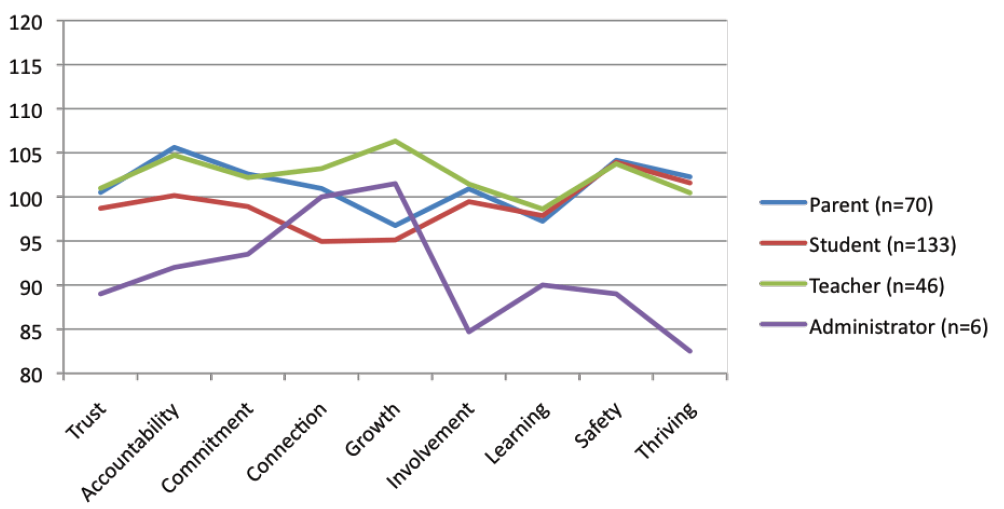Educational Vital Signs
The Education Vital Signs (EVS) is a statistically validated, normed assessment of school climate that quickly identifies areas both supporting and interfering with school success. The school/district climate influences critical constituent behaviors such as communication, problem-solving, and accountability – factors that affect students’/parents’/employees’ ability to work effectively.

EVS creates a snapshot of the current school climate – an overview of the community members’ relationship with the organization.
The climate is the context in which faculty works each day, in which students learn, andin which parents interact; our research shows that the climate based on these perceptions of “connectedness” strongly influences learning, involvement, safety, and thriving.
The survey is built on the Vital Signs Model, a simple, powerful framework for understanding the ingredients of climate and how they shape the organization’s success. The EVS Model is presented below. There are five elements of school climate, shown in blue, arranged on two axes (individual-group, and vision-action):
The climate factors are, briefly:
Trust: Feeling safe and secure to be open and take positive risks.
Accountability: Feeling respect about behavior, following agreements.
Commitment: Feeling involved and engaged in meaningful work.
Connection: Feeling belonging as part of an inclusive community.
Growth: Feeling supported to face challenges and flourish.
The EVS measures these factors with input, usually online, from a variety of constituent groups (typically students, teachers, parents, administrators). Here is an example result:


These data are used to build a shared understanding of the current climate at the school, from the perspective of each stakeholder group. This “vital signs” data can effectively be used to:
Build a shared understanding of priorities.
Re-examine mission, vision, goals.
Measure progress.
Improve communication.
As shown in the previous graph, the EVS questionnaire measures the five ingredients of the school climate, and it measures four key outcomes:
The results of the climate survey (in blue), predict 49.3% of the variation of these outcomes (in orange). Thus, improving school climate is a powerful way to strengthen:
Learning: Students’ academic growth.
Safety: Physical and emotional wellbeing.
Involvement: Participation in the school community.
Thriving: Long term viability of the culture.
Custom questions can also be added to the EVS to gather additional data.
